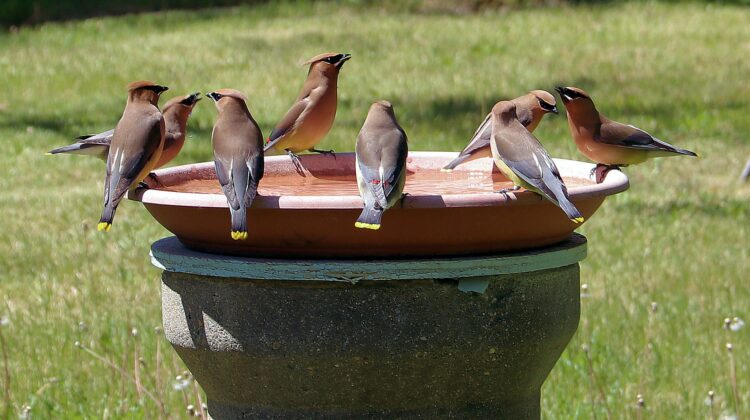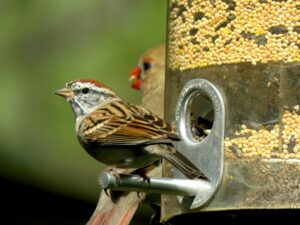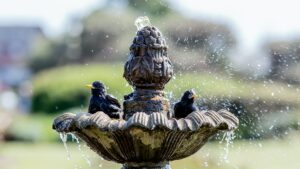
Bird watching has become a really popular hobby for many people, as it’s both easy and accessible to all ages and fitness levels. Besides becoming a backyard bird watcher, attracting birds to your backyard will also make your garden more attractive and help support your local ecosystem. Looking for ways to attract more birds to your yard? Lucky for you (and the birds) they aren’t difficult customers, and will go anywhere which provides them with the things they need. You can set up your garden as the local bird paradise for very little money and effort if you know what birds like.

What Will Attract Birds To Your Yard?
Birds basic needs are simple: They want food, they want shelter and they want some way to clean up and cool off in summer. All of this is very easy to provide in a garden, and if you also provide suitable nesting places you may even get them to settle down as permanent residents. However, not all birds will nest near human populations, and some species will remain casual visitors to your garden.

Make your garden bird friendly installing one or several types of bird feeders, a bird bath and some nesting boxes. You can build your own, or acquire them second-hand if you don’t want to spend a lot of money. Birds are not terribly bothered about price: a brightly colored plastic bird bath can be as attractive as an expensive handcrafted stone bird bath, or more. If you have a garden fountain you will see birds congregating around it: they love moving water as it’s usually cleaner.
If you are looking to attract hummingbirds to your garden their needs are a bit different. They want nectar instead of grain, for example. In winter, a heated hummingbird feeder will attract many of those little birds, but in summer you may be competing with gardens full of flowers. If you want to get hummingbirds to visit your backyard you would do no wrong planting flowering bushes and nectar producing flowers, which will also attract bees and butterflies and help the local wildlife thrive.
How Do I Attract Native Birds to My Backyard?
If you want to attract some more unusual native birds to your backyard, the key is to provide them with the right kind of food. A bird will go to great lengths to feed on their favourite foods, and doing a bit of research on the species of native birds you want to attract will pay huge dividends.
Native wild birds can be very specific on their tastes. Oats, cereals and other “filler” grains may be disregarded in favour of more attractive fare but will attract more common birds such as sparrows, crows or pigeons. The larger ones can lay claim to your feeder and scare more unusual and shy species. Generally speaking, you can’t go wrong with the berries and seeds of native plants.
Black oil sunflower seeds and a suet feeder are generally very appealing to wild birds. Some birds such as goldfinches enjoy thistle seeds, whereas cardinals will appreciate a treat in the form of berries, crushed peanuts or white milo. Some birds such as orioles are partial to fruit, and there are specific bird feeders designed to cater to this kind of diet. Give them the food they prefer, and they’ll come.
Do Birds Remember Where Feeders Are?
Yes! Birds are clever like that and will come back to the feeder provided nothing scares them. Some birds are more cautious than others, and will stop coming to a feeder if they get disrupted. For example, if a cat or dog decides to hunt the birds on a bird feeder, they may decide to avoid the area for the foreseeable future. Make sure your feeder is safe from predators and has nearby hiding spaces such as trees and bushes so birds feel safe and keep coming back.
How Do You Get Birds To Notice Your Bird Feeder?
You got a bird feeder and some nice bird food… how do you tell the birds in the area that you are open for business? Well, that’s easy. Birds have great eyesight, and they will find food by eye. So make sure the feeder is visible from above and not hidden by trees or bushes. A direct line of sight to your bird feeder also means more opportunities for birding from the distance without scaring away birds.
Birds usually have very good color vision, which means a brightly colored feeder can attract more of them. But it depends on the species. For example, hummingbirds seem to like red feeders, but other species rate green and blue feeders the most. Orioles in particular like orange feeders, which also happens to be their favourite type of food.
If you want to attract ground feeding birds such as doves, sparrows or juncos choose a a platform feeder installed near ground level and fill it with a seed blend high in millet. On the other hand, hopper feeders and tube feeders are more suitable for birds who like feeding at a height, such as chickadees, nuthatches and titmice who enjoy black oil sunflowers, safflower and stripped sunflower seeds.
Another favourite treat for birds are live worms and caterpillars, and fruit. If you are looking to attract indigo buntings to your backyard some worms and thistle/nyjer or dandelion seeds usually appeal. Orioles, on the other hand, enjoy fresh fruit and may need a specialised feeder.
Why Are There No Birds at My Feeder?
If after a few days your bird feeder hasn’t got visitors yet, it’s time to trouble-shoot.
The first thing to consider is the location of the feeder: birds don’t like eating if they feel unsafe or exposed. A feeder that is in a highly trafficked area or too close to human habitation will mostly attract the kind of urban birds used to people. If you want to get wilder native bird species on your garden, offer them food in an out of the way area and make sure it’s safe from predators such as cats or birds of prey. Avoid the temptation to go and check on the feeder in person frequently: while it’s important to keep the bird seed dry and the feeder clean, a clumsy human making noise will scare away birds.
Next thing to look at is the kind of food you are putting on the feeder. The bird food blend you are using should fit the birds in your area and your own preferences on what kind of birds you want to attract.
Thirdly, check that your feeder is not attracting the wrong kind of visitors. Make sure to squirrel proof your bird feeder or you may find a territorial squirrel is getting all the nice food and scaring away the birds.
Where Is the Best Place To Hang a Bird Feeder?
Birds need to feel safe to eat, and the more rare the bird species the more delicate they are about this. Choose a place that is protected from predators or have suitable cover for the birds to hide. Avoid open and noisy areas or places with high traffic. Some types of birds are perfectly fine with humans being relatively close, while others will only feed when the garden is empty.
Elevated bird feeders should be hang at around eye level, but pay particular attention to two types of bird feeder pests: cats and squirrels. Squirrels will jump into a feeder from taller branches and disturb the birds, while cats will sure appreciate an easy hunting spot if the feeder is too close to the ground.
Birds enjoy feeding in the sun and out of the wind, so a sheltered southeastern exposure spot is going to be the most popular. Make sure there is a clear view around the feeding area so predators can’t sneak up on the birds. A sunny, open spot in your yard will make it easy for birds to see your feeder and feed in peace and safety.
How Far Should a Bird Feeder Be From the House?
The best distance between the bird feeder and buildings is not set in stone, as it depends on the type of bird and the type of feeder.
Window collisions can be deadly for small birds and this risk must be taken into account. A window feeder for hummingbirds for example is perfectly safe as the birds won’t run into the windows but only as long as there is no activity next to it that would scare the birds. In order to avoid birds hurting themselves, keep non-window feeders at least 10 feet away from any glass surfaces.
Which Bird Feeder Attracts Most Birds?
There is no clear winner here, but a simple platform bird feeder with pole with a blended seed mix can attract a wide variety of birds and it’s generally easy to install and maintain. The larger the feeder, the more birds you will attract as they do like their space. Some types of birds can become aggressive and territorial if the feeder is overpopulated, so if you want to attract many birds to your garden putting up several bird feeders is usually a better idea.
How Do I Encourage Birds To Use a Bird Bath?
Birds love water! Besides food, a bird bath is probably the best way to attract native birds to your backyard. Birds love cleaning themselves, drinking and cooling off near water and many species are attracted by the sound of water running such as a garden fountain.

So as long as the bird bath is in a sunny, clear area with a good view of their surroundings, you don’t really need to encourage birds to use a bird bath. You will soon notice queues to use it, particularly in hot weather.
For the safety of birds, make sure the bird bath is always clean and well maintained. Some shrubs planted near your bird bath, at about 12 feet distance, will give birds a place to hide if they sense danger, and increase their enjoyment of the water feature. If the bird bath is quite large, adding a few rocks so birds can perch and keeping it shallow will ensure lots of air traffic to your garden.
What Color Attracts Birds to a Bird Bath?
Birds with a nervous temperament are usually attracted to bird baths that look natural, so choose colors such as gray, brown or green. Avoid white, as that color usually signals danger and can actually scare away birds.
Installing one or several bird feeders and bird baths within line of sight of your home will allow you to enjoy the many pleasures of backyard birding, without having to spend a fortune. And it’s actually pretty fun to learn what native birds enjoy in your garden, and move the garden features around to see what works best for attracting birds to your yard.
Leave a Reply